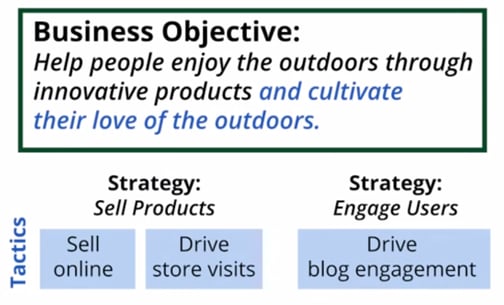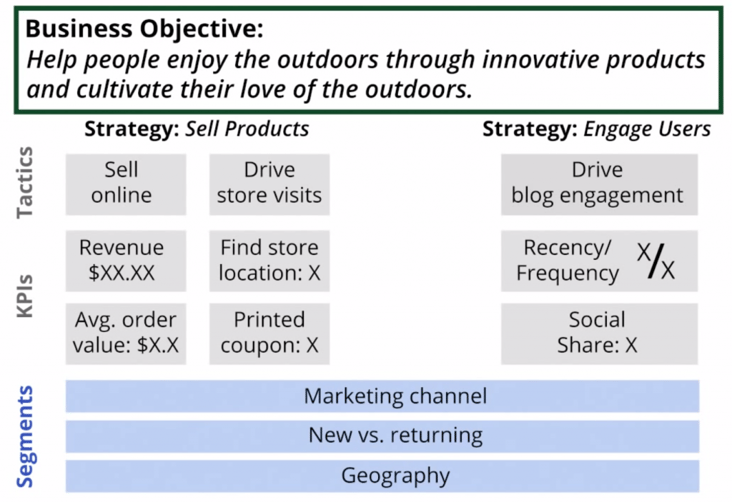Data Collection, Tracking & Analysis: Measure & Grow Success
Using data and data analysis to inform your business decisions has become universally recognised as best practice. This post will help you understand how to plan your own data tracking and analysis process. This process well planned and implemented will increase your return on investment.
4 Step Guide to Data Tracking/Measurement
- Establish Digital Business Objectives
- Develop Strategies and Tactics
- Identify KPI’s to measure success of your strategies
- Pick out some Segments
1) Establish Digital Business Objectives
The whole point of this measurement process is to work out exactly what is working for your business and what isn’t. We want to know if you are making good decisions for your business.
A quick way to drill down to your core digital business objectives is to ask: ‘why does my business’s digital presence exist?’
For example let’s use a scenario provided for us by Google:
You run an outdoor equipment (camping gear etc) retail store with both physical stores and a website which has an online shop and a blog which they use to engage customers on how to enjoy the outdoors.
Your business objectives (why does your site exist?) would be:
a) Help people enjoy the outdoors through innovative products & b) cultivate their love of the outdoors
![]()
2) Develop Strategies and Tactics
Next, develop a plan to act on your digital business objectives
Firstly, come up with a broad strategy/idea to achieve each objective. These can be really simple.
For example in our Outdoor Equipment scenario:
Strategy for objective a) : Sell Products
Strategy for objective b) : Engage Users
You then need to think in slightly more detail about a set of tactics to achieve each strategy.
For example in our Outdoor Equipment scenario:
Tactics for Strategy a) 1) Sell products online & 2) Drive visits to the store
Tactics for Strategy b) 1) Drive blog engagement

3) Identify KPI’s
It’s important to develop some KPI’s to measure the effectiveness of your tactics. A KPI is a ‘key performance indicator’ – a metric that helps you understand (measure) how you well your tactics are achieving your objectives.
For example in our Outdoor Equipment scenario the KPI’s may be:
Tactic a) 1) Total Revenue & average order value
a) 2) Number of find store location events on site & Number of printed coupons for in store use
Tactic b) 1) Recency & Frequency of blog visits & social sharing of blog posts
4) Pick out some Segments
The data provided by your KPIs is meaningless without segmentation. Establishing your segments needs to be informed by the 3 steps preceding it.
A segment should broadly be defined by:
– a certain group of people
-their source (how they came into contact with your digital presence)
-what they did on your site (user behaviour)
-what were the outcomes (KPI’s they added to).
For example in our Outdoor Equipment scenario relevant segments may be:
1) Marketing Channel: which marketing channel did people who completed any one of your KPI’s come to the site through
2) Existing or New Customer: was it a returning or new customer that completed a KPI
3) Geography: Where was a user located when they completed a KPI

A Plan for Success
If you follow those steps you should end up with a plan for digital success for your business. This is a process that allows you to unlock hugely valuable insights into your customers journey to purchase. For information on the customer journey click here